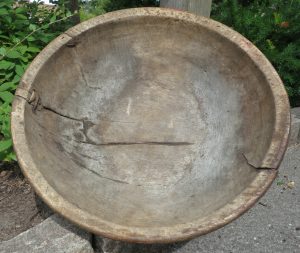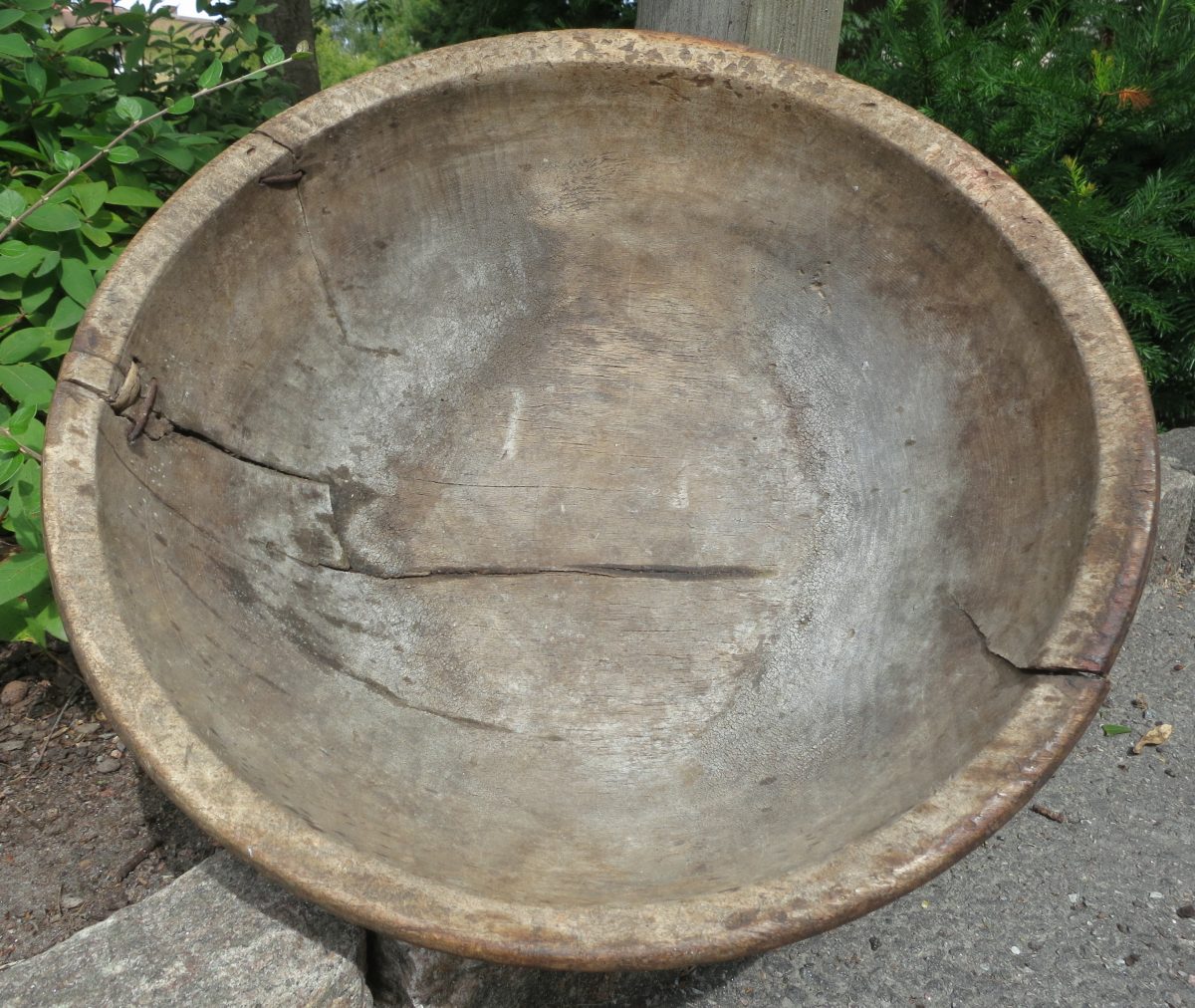Farmer Maggot’s Wooden Bowl

Object: Bowl
Medium: Oak
Creator: Farmer Maggot, farmer
Date of Manufacture: 2948-2958 TA
Place of Creation: Bamfurlong, The Marish
Artefact Number: M-h 169
Source: Donation
Description
This well-worn wooden bowl, carved by Farmer Maggot as a young Hobbit from the bough of an ancient oak felled in the Marish, marks the beginning of his journey in woodworking and his life in the Shire. Known for his mushrooms and stern dealings with trespassers, Farmer Maggot was a well-known member of his community. The bowl’s edges, softened and cracked through decades of use, hold countless memories of meals and family gatherings. Though simple in design, its decades of use reflects the enduring spirit of the Hobbits of the Marish and stands as a testament to the ingenuity and simplicity of their craftsmanship.
Background and Significance
Amongst Hobbits, practicality and quality craftsmanship often intertwine seamlessly, and few objects represent this better than Farmer Maggot’s wooden bowl. Carved from the bough of an ancient oak tree felled in the Marish, this bowl came to hold more than simply the remnants of hearty meals, but also the story of a life well-lived and the endurance of Hobbit culture.
Farmer Maggot carved this bowl himself during his youth, likely in the early days of managing his family farm, Bamfurlong (2948-2958 TA). With its sturdy and simple design, it represents not just the young Hobbit’s first foray into woodworking, but also the self-reliance and quality workmanship which characterises the Hobbits of the Marish. In a time when every tool and utensil was either self-crafted or traded amongst neighbours, the creation of this bowl was a practical necessity for the young Hobbit and his family. Through its decades of service in the Maggot household it was elevated from a simple utensil to a cherished family heirloom.
Over many years as a central feature of the Maggot household, the bowl was home to mushroom stews, hearty breads, and the spoils of harvest. Its edges and interior, cracked and worn from decades of handling, testify to its daily use. This bowl accompanied Farmer Maggot during his long days in the field, holding his lunch or a fresh crop of mushrooms. At night it returned to the table of the Maggot household, bearing witness to the laughter, stories, and communal bonds that define domestic Hobbit life.
In this regard, it remains not just as a central piece in the life of one Hobbit and his family, but as a reflection of the broader cultural values of the Shire. Hobbits are a people defined by their traditions and sense of community, able to find beauty and significance in the ordinary, basic, and mundane of everyday life. Although simple in its design and unremarkable in appearance, this bowl represents the ingenuity and resourcefulness of Hobbits who place value in the utility of their items and the memories tied to them. As a result, its placement in the Mathom-house at Michel Delving comes as no surprise. As a repository of Shire curiosities and a place where the values of Hobbit culture are explored and reflected upon, this bowl is not out of place in the slightest.
By the time this bowl was donated to the Mathom-house, its status as a symbol of resilience and home was already well-established. As Farmer Maggot’s first true foray into woodworking, it marks the beginning of his long life as a steward of the land, provider for his family, and a skilled craftsman in his own right. Its cracks and worn edges are not merely flaws but rather evidence of a long, storied, and useful life, mirroring once again the values found in Hobbits themselves.
Though this object is found amongst objects of far more value and elaborate design in the Mathom-house, it remains as a quiet and understated reminder of the simplicity and durability that defines the Shire and the lives of its people.
Image Attribution, Copyright Information
Image: [Photograph], [Late 1800s wooden bowl from Solberga parish, Kungälv municipality, Sweden], [R. Henrik Nilsson], [Wikimedia Commons], [Creative Commons Attribution 4.0 International], and [https://commons.wikimedia.org/wiki/File:Late_1800s_wooden_bowl_Solberga_parish_Kungaelv_municipality_Sweden.jpg]
